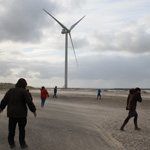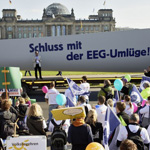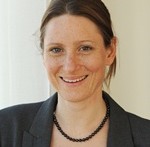 Extending or ending the US’s Production Tax Credit is a topic high in the minds of wind industry professionals with interests in the US, but how is it reported in US media?
Extending or ending the US’s Production Tax Credit is a topic high in the minds of wind industry professionals with interests in the US, but how is it reported in US media?
Interestingly, an increasing number of US newspapers support an extended PTC. Here, we round-up some of the latest articles…
In San Angelo,Texas the Standard-Times said, “give the wind industry some certainty, and then stand back and watch the turbines spin.” In an editorial on Saturday the newspaper noted the tax credit of 2.2 cents per kilowatt-hour is set to expire at the end of the year unless Congress renews it. “Few disagree that failing to extend it will cause great harm to the industry just as it is beginning to flourish,” the newspaper lobbied.
 The nuclear industry’s ‘Foratom’ blog recently criticised EWEA’s argument in a recent report that “massive subsidies to fossil fuels and nuclear energy…. remain the rule”.
The nuclear industry’s ‘Foratom’ blog recently criticised EWEA’s argument in a recent report that “massive subsidies to fossil fuels and nuclear energy…. remain the rule”.
Foratom instead claimed that “it is renewable energies, especially wind and solar energy that are the most systematically subsidised forms of energy, not nuclear energy.”
Foratom then set out some of the subsidies renewables receive. The highest figure they quote is “In Germany, total subsidies amount to €5 billion per year”.
But Foratom does not mention the massive amounts of public money set aside for nuclear decommissioning. €5 billion is a trivial sum compared to the money the UK Government has set aside just for nuclear decommissioning.
Former UK Energy Secretary Chris Huhne said in October 2011 “the provisions for nuclear decommissioning costs in total were £2 million in 1970, £472 million in 1980, £9.5 billion in 1990, £22.5 billion in 2000. And now, £53.7 billion.”
 By Fiona Woo, World Future Council
By Fiona Woo, World Future Council
Winds of 60 km per hour hit us as soon as we alighted from the bus at Hvide Sande – “White Sand” – on the west coast of Denmark, home to a community-owned wind energy project comprising three 3MW turbines. All that could be heard was the powerful wind: the generators cannot be heard over the considerable sound of the wind.
I was joined by 40 policy makers and experts from 15 European countries as part of a workshop on 100% Renewable Energy in European Regions, organised by the World Future Council and the Climate Service Center at the Nordic Folkecenter, Denmark. The region serves as a living example of 100% renewable energy already in action. Wind plays a big role in this area of Europe: 87% of the country’s electricity consumption that day was covered by wind power, and, in Denmark as a whole, €16 million from local residents is being invested in renewable energies.

Turbine blade in front of the Reichstag
A massive wind turbine blade was this weekend set up in front of the German parliament by the German Wind Energy Association (BWE) to make a point: more renewable energy is not the only reason behind electricity price rises.
Debate in the German media and political circles is raging on the rising cost of electricity due to the increasing cost of the Renewable Energy Source Act – or Erneubare Energien-Gesetz (EEG). The EEG was designed to fund Germany’s transition to renewable energy, accelerated following the Fukushima nuclear disaster and consequent shut down of nuclear power planned for 2022.
“With this action we want to clarify the facts for the consumer…on top of that we want to point out that the positive effects of renewable energies are completely absent from the public debate,” BWE President Hermann Albers said.

Angelika Pullen
By Angelika Pullen, WindMade
This, I have to admit, is a real coup for WindMade: Bloomberg US is the first news organisation in the word to receive the WindMade certification label.
This is also good news for the environment: as much as 58% of the power consumption of Bloomberg’s US operations are covered by wind power, and a further 25% by biomass energy. These shares are much higher than the 25% entry level WindMade requires!
Bloomberg believes that this move will give them a competitive edge, and they might well be right – consumers love renewable energy. Once again, this year’s edition of the Global Consumer Wind Study[i] comes to this conclusion, showing that 79% of respondents would prefer to have their electricity generated by renewables, compared to 5% for fossil fuels and 7% for nuclear. And, what’s more, 74% of consumers answered that they would have a more positive perception of brands that use wind power as their main energy source.
 Extending or ending the US’s Production Tax Credit is a topic high in the minds of wind industry professionals with interests in the US, but how is it reported in US media?
Extending or ending the US’s Production Tax Credit is a topic high in the minds of wind industry professionals with interests in the US, but how is it reported in US media?






 Comments
Comments



